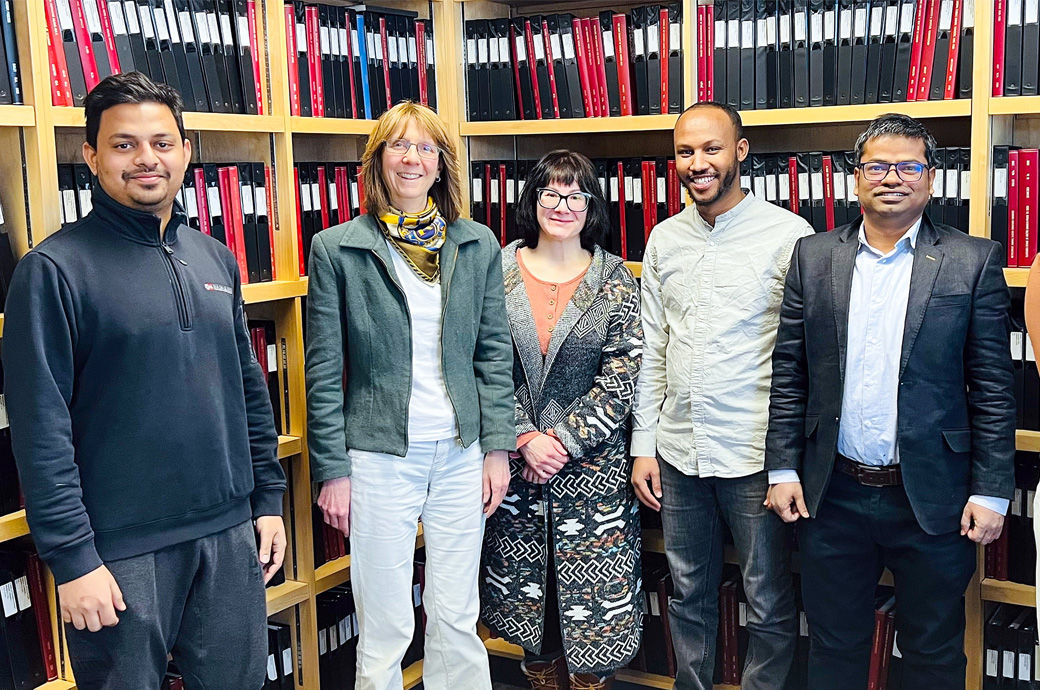
Researchers at the University of Alberta are working to transform straw into a versatile, environmentally friendly material with a wide range of applications, from dental floss to durable workwear. Led by textile scientist Patricia Dolez from the Faculty of Agricultural, Life & Environmental Sciences, the initiative focuses on developing effective methods for processing and manufacturing specialised fibres derived from cellulose—a natural compound found in all plants.
“The work, when fully developed, can benefit the environment, the economy and Canada’s textile manufacturing sector. There’s a lot of overarching potential for this work to strengthen Canada’s bioeconomy by creating made-in-Canada fibres using local sources of cellulose in an environmentally friendly process,” Dolez said in a press release.
Experimenting with cellulose from Canadian-grown hemp, Dolez and her team are planning to determine the best parameters for producing lyocell, a man-made fibre, which can then be turned into textiles for a wide range of products.
The solvent used in producing lyocell is almost 100 per cent recoverable, making it a sustainable way to manufacture textile fibres. The regenerated cellulose fibres also provide a use for agricultural straw that would otherwise be left in the field, said Lelia Lawson, a PhD student in human ecology working on the project.
“Hemp, in particular, offers great opportunities as a local source of cellulose for the lyocell process. While traditional sources like eucalyptus trees and bamboo plants don’t grow in Canada, the country’s long daylight hours are good for growing hemp. It can grow up to 20 feet tall, which means more feedstock to work with. There’s a lot of biomass from this crop,” added Lawson.
The research began in 2023 in the U of A’s Biorefining and Conversions and Fermentation Laboratory and the Protective Clothing and Equipment Research facility. The work is happening in two phases, first exploring how to enhancethe process of manufacturing the cellulose filaments.
“When taking the cellulose and making a fibre out of it, we want to see how we can optimise the selection of blending different types of hemp, to get the best performance in qualities such as strength,” added Dolez.
The researchers are then adding other ingredients to the cellulose to modify the fibre so it stands up under wet or dry conditions, and is resistant to fire, UV rays and shrinkage.
In initial control experiments, the researchers have already been able to create a lyocell fibre using cellulose from wood pulp, laying the groundwork for experimenting with hemp.
“We are very excited to show success with the method we’ve developed. We’re still refining the process and learning new things, but since we have a proof of concept with existing wood pulp, we can proceed with experiments using hemp and other feedstocks, such as cellulose from used clothing,” Lawson added.
When it’s complete, the research will lead to patented technology that can feed Canada’s textile manufacturing sector, says Dolez.
“There is almost no fibre production in Canada, so this will help assure a domestically available supply. There’s also the potential to expand international markets for lyocell fibres. Humans are starting to consume more cellulose-based textiles, mainly cotton, but that can only be grown in certain agricultural zones, so land is limited. Alternative forms of cellulose would help fill that gap, and hemp feedstock is a good opportunity because it can grow almost everywhere in the world. Once we are able to apply this technology, we could have quite a strong boom for potential end users, not just for textiles, but for anything from biofuels to food science,” added Lawson.
The work, which also includes the expertise of U of A researchers Jane Batcheller and David Bressler, is funded by the Alberta Innovates Agri-Food and Bioindustrial Innovation Programme, Bioindustrial Innovation Canada and PrairiesCan. Industry partners include Davey Textile Solutions Inc funded through the National Research Council Canada Industrial Research Assistance Programme, clothing retailer Mark’s, Techfibre Industries and Plantae Technologies.
Fibre2Fashion News Desk (RR)